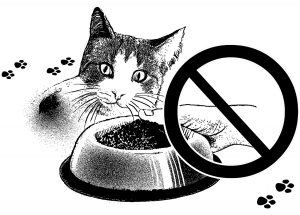BARA Bugle (Broadmead Area Residents Association Newsletter),
Spring 2008 – Michael Carson
 The perimeter trail around Rithet’s Bog is a delight to many different kinds of user, yet in a sense this recreational benefit is merely an adjunct to the main function of the Bog as a conservation area, created to protect the central Sphagnum moss-Shore Pine assemblage, as well as providing a sanctuary for wildlife in a growing suburban sprawl.
The perimeter trail around Rithet’s Bog is a delight to many different kinds of user, yet in a sense this recreational benefit is merely an adjunct to the main function of the Bog as a conservation area, created to protect the central Sphagnum moss-Shore Pine assemblage, as well as providing a sanctuary for wildlife in a growing suburban sprawl.
Bird life in the Bog area, especially around the wetland margins, is abundant and varied. Based on surveys by the Victoria Natural History Society, more than 160 different bird species have been observed in the area since the late 1950s. Yet long-time residents lament the disappearance of ground species, such as California Quail and Ring-necked Pheasant, which they attribute in large part to the predation by an ever-increasing number of cats in the bog. Though the problem has been with us for many years now, there seems to have been a marked increase in numbers in the last few years, with reports of up to 20-30 cats on the south side alone, most of which, but not all, appear to be feral.
The seriousness of this problem has been highlighted by the work of Dr Liana Zanette, a biologist from the University of Western Ontario who has spent the last eight springs and summers monitoring the behaviour of Song Sparrows at Rithet’s Bog, including their predation by cats. Dr Zanette writes:
We have video evidence showing that cats in the bog eat not only nestlings but eggs as well, and the moms sitting on the nests are at great risk themselves.
My recommendation would be to remove these feral cats from the bog as soon as possible. Under no circumstances should these cats be fed.
Some residents of the Foxborough Hills townhouse complex are especially upset, having seen, first-hand, attacks by cats at bird feeders. Recently one of these two strata corporations commissioned its manager to communicate with Saanich on the matter in the hope of resolving the issue. In the meantime, RBCS, once again, respectfully asks all neighbours of the Bog not to feed feral cats and, in addition, to prevent their own cats from roaming in the Bog environs.
This problem is, of course, far from being unique to Rithet’s Bog. The National Audubon Society (U.S.) is particularly concerned about the role of cats in the predation of birds. For those wanting to read more about it, simply Google “feral cats birds” and you will have a choice of more than 350,000 web entries.
